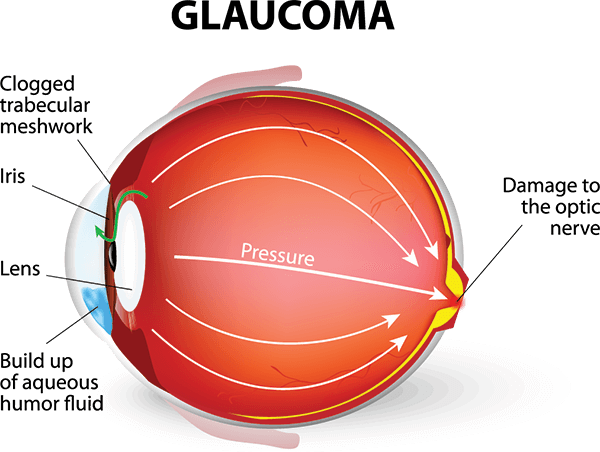Experienced Retina Service Near Me: Comprehensive Eye Treatment Solutions
Experienced Retina Service Near Me: Comprehensive Eye Treatment Solutions
Blog Article
Understanding the Various Vision Correction Procedures Available for Clearer View
In the realm of vision modification treatments, a multitude of options exist to attend to refractive mistakes and provide individuals with more clear view. Allow's explore the ins and outs of these treatments and shed light on the path to attaining enhanced vision clarity.
LASIK Surgical Treatment
LASIK surgical treatment is a common refractive treatment used to deal with vision issues such as farsightedness, nearsightedness, and astigmatism. This surgical strategy, which stands for Laser-Assisted in Situ Keratomileusis, aims to improve the cornea to enhance how light is concentrated on the retina, eventually enhancing vision clarity.
One of the key advantages of LASIK surgical procedure is the fast renovation in vision experienced by people. Generally, LASIK surgery is a popular choice for individuals seeking a long-term option for their vision troubles.
PRK Procedure
While also a common refractive treatment, the PRK (Photorefractive Keratectomy) strategy differs from LASIK surgery in its strategy to dealing with vision issues. In PRK, as opposed to producing a flap on the cornea, the outer layer of the cornea, called the epithelium, is entirely eliminated. This allows the laser to improve the cornea to fix refractive errors such as astigmatism, farsightedness, and nearsightedness straight externally.

Despite the longer recuperation time, PRK can produce superb results in vision improvement, making it a beneficial option for those that may not be appropriate prospects for LASIK surgical procedure.
Implantable Lenses
In comparison to PRK where the cornea is improved straight, implantable lenses provide an additional approach for correcting vision by placing artificial lenses inside the eye. This procedure is specifically helpful for people with high levels of astigmatism, nearsightedness, or farsightedness who might not be suitable prospects for laser surgeries like LASIK or PRK.
Implantable lenses, likewise understood as phakic intraocular lenses, job by supplementing the eye's natural lens with a man-made one. refractive surgeries in al. These lenses can be placed in front of the all-natural lens (anterior chamber) or behind the iris and before the all-natural lens (posterior chamber) By readjusting the power and positioning of these lenses, ophthalmologists can successfully fix refractive mistakes and boost aesthetic acuity
One advantage of implantable lenses is that they are detachable and exchangeable, providing adaptability for future modifications. Nevertheless, as with any operation, there are risks entailed, such as refractive surgeries in al infection or cataract formation. People taking into consideration implantable lenses must consult with an eye treatment expert to determine one of the most suitable alternative based on their individual requirements and eye health.
Corneal Rings
Corneal rings, likewise referred to as intracorneal ring sectors, are small, transparent tools placed right into the cornea to fix vision distortions such as keratoconus. Keratoconus is a problem where the cornea thins and bulges exterior, causing vision to come to be distorted. The insertion of corneal rings aids to flatten the cornea, boosting visual skill and decreasing the uneven astigmatism triggered by keratoconus.
The treatment for putting corneal rings is minimally intrusive and relatively fast, commonly performed as an outpatient treatment. During the surgical procedure, the ophthalmologist makes a small cut in the cornea and inserts the rings at a particular depth. As soon as in position, the rings aid to reshape the cornea, providing a smoother surface for light to enter the eye, which can cause clearer vision.
Corneal rings are taken into consideration a reversible treatment, as they can be eliminated or replaced if needed. refractive surgeries in al. While they might not entirely remove the requirement for glasses or contact lenses, corneal rings can considerably improve vision top quality and general visual convenience for people important site with keratoconus or various other corneal abnormalities
Refractive Lens Exchange
Complying with the improvement of corneal abnormalities with procedures like corneal rings, one more vision improvement technique that can attend to refractive mistakes is Refractive Lens Exchange (RLE) RLE is a surgical treatment that includes changing the eye's all-natural lens with an artificial intraocular lens (IOL) to remedy refractive mistakes such as presbyopia, nearsightedness, and farsightedness. This treatment is particularly valuable for individuals that might not be suitable candidates for treatments like LASIK or PRK as a result of variables such as thin corneas or high refractive errors.

Verdict
In final thought, there are numerous vision correction procedures available to help individuals achieve more clear view. LASIK surgical procedure, PRK procedure, implantable lenses, corneal rings, and refractive lens exchange are all options that can address different vision issues.
In the realm of vision modification treatments, a plethora of options exist to deal with refractive errors and offer individuals with more clear sight.LASIK surgical treatment is a typical refractive procedure used to remedy vision issues such as astigmatism, nearsightedness, and farsightedness.While also a common refractive treatment, the PRK (Photorefractive Keratectomy) method differs from LASIK surgery in its strategy to correcting vision troubles.Adhering to the modification of corneal abnormalities with treatments like corneal rings, one more vision adjustment method that can deal with refractive mistakes is Refractive Lens Exchange (RLE) LASIK surgical treatment, PRK treatment, implantable lenses, corneal rings, and refractive lens exchange are all options that can address different vision concerns.
Report this page